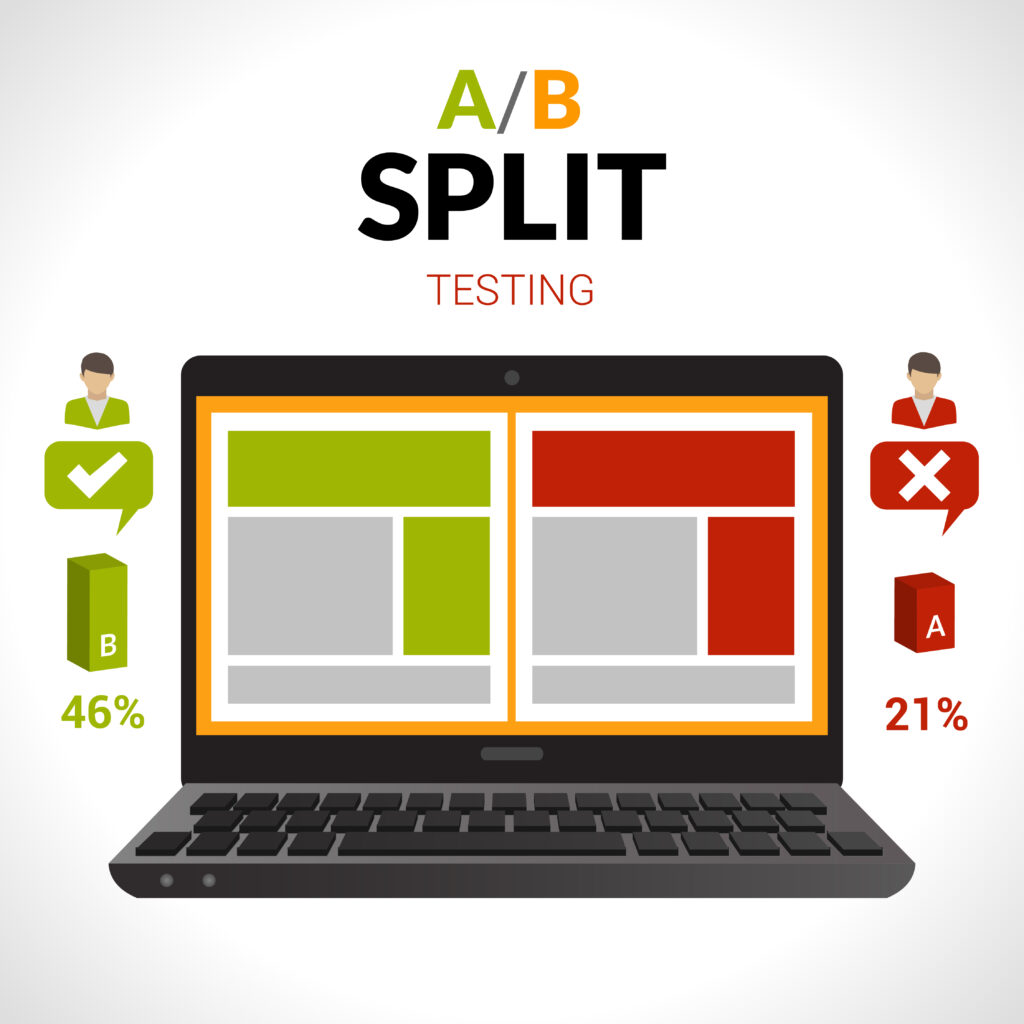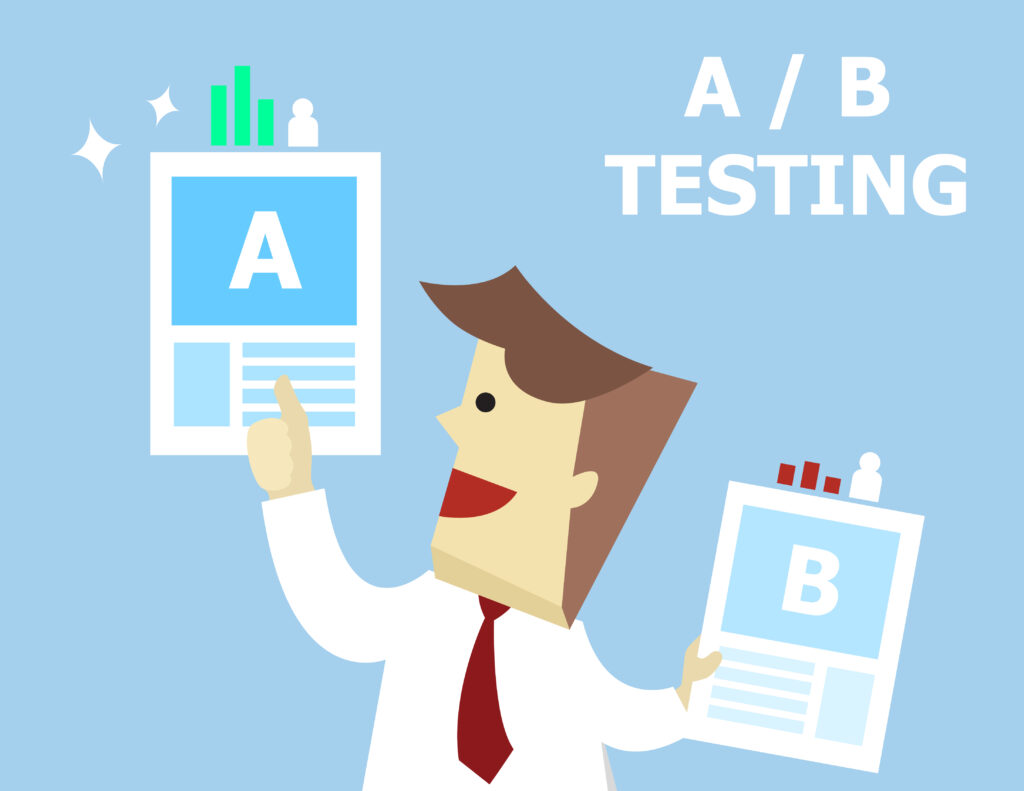What is A/B Testing and where to use it
In the realm of digital marketing, making informed decisions based on data is crucial for maximising returns on investment. A/B testing, also known as split or bucket testing, serves as an invaluable tool in this pursuit. By comparing two versions of content, such as email copy, display ads, or website banners, businesses can identify which variation yields superior results. In this blog post, we will delve into the workings of A/B testing in marketing and highlight its significance in optimising web experiences.
Understanding A/B Testing
A/B testing involves a straightforward experimental process that focuses on analysing changes to a specific aspect of content. The original version of the content is referred to as the “control,” while the other versions are variations that differ from the control in only one element. By presenting these variations to the target audience, marketers can gauge their impact in terms of click-through rates, bounce rates, sign-ups, and other desired actions. The controlled nature of the test ensures that any differences in results can be attributed solely to the isolated change.
A/B testing empowers marketers to compare various elements of content, for example: copy, colour schemes, graphics, formatting, keywords, and more. By systematically testing these elements, businesses can uncover valuable insights into the preferences and behaviours of their audience.

Benefits of A/B Testing in Marketing:
Data-Driven Decision Making: A/B testing provides marketers with concrete data to support their decision-making process. By basing choices on empirical evidence rather than assumptions, businesses can align their strategies with what resonates most with their audience.
Improved User Experience: It allows marketers to refine and enhance user experiences. By identifying the most effective variations, businesses can optimise their content, leading to increased engagement, conversions, and customer satisfaction.
Cost-Effective Optimisation: A/B testing eliminates guesswork by enabling businesses to focus on changes that have a direct impact on desired outcomes. This targeted approach prevents unnecessary expenditure on ineffective modifications and ensures resources are allocated efficiently.
Let’s see some example of A/B testing in marketing:
It is a valuable technique for optimizing various aspects of your online marketing content. By following the process consistently, you can achieve incremental improvements in your results. Let’s explore some common applications of A/B testing in marketing:
Website Banners:
A/B testing can be used to optimize website banners, which are often placed prominently on the homepage or other key pages. Marketers can test different variations of banners, including:
- Different imagery and visuals
- Varying calls-to-action and messaging
- Placement and size of the banner
- Colour schemes and design elements
By comparing the performance of different banner designs, businesses can determine which version drives higher engagement and conversions.
Video Advertisements:
It can also be applied to video advertisements, which have become a popular format for digital marketing. Marketers can test various elements of video ads, such as:
- Different opening sequences or hooks
- Varying lengths of the ad
- Testing different storylines or narratives
- Call-to-action placements within the video
By experimenting with different versions of video ads, businesses can identify the most compelling and engaging content to capture viewers’ attention and drive conversions.
Social Media Posts:
A/B testing can be applied to social media posts to understand what resonates best with the target audience. Marketers can test various elements, such as:
- Different headline or caption copy
- Variations in imagery or graphics
- Testing different post formats (e.g., images vs. videos)
- Varying posting times and frequency
By analysing the performance metrics of different post versions, businesses can optimize their social media content strategy and drive higher engagement and conversions.
PPC Ads:
A/B testing is commonly used for Pay-Per-Click (PPC) ads, including search ads in Google SERPs, display ads on websites, and paid social media ads. Marketers often test components such as:
- Title and description copy of Google search ads
- Colour, imagery, and copy used in web display ads
- Colour, imagery, and copy used in paid social media ads
For instance, imagine an ecommerce company selling skin care products that wants to launch search ads for a new vegan product. They could conduct an A/B test to determine the most effective ad title copy for their target audience. PPC A/B testing allows you to run ads with different creatives, aiming to maximize the ROI of conversions.

Let’s summarise it
In today’s data-driven marketing landscape, A/B testing emerges as a powerful ally for businesses seeking to improve their digital marketing strategies. By comparing different content variations and leveraging the insights gained, marketers can enhance their understanding of their target audience and drive greater engagement and conversions. Adopting A/B testing as a best practice allows businesses to remain competitive, optimise their marketing efforts, and ultimately achieve a higher return on investment.
Remember, A/B testing is not a one-time exercise but an ongoing process of continuous improvement. By embracing this methodology, marketers can unlock the potential for long-term success in the ever-evolving digital world.


